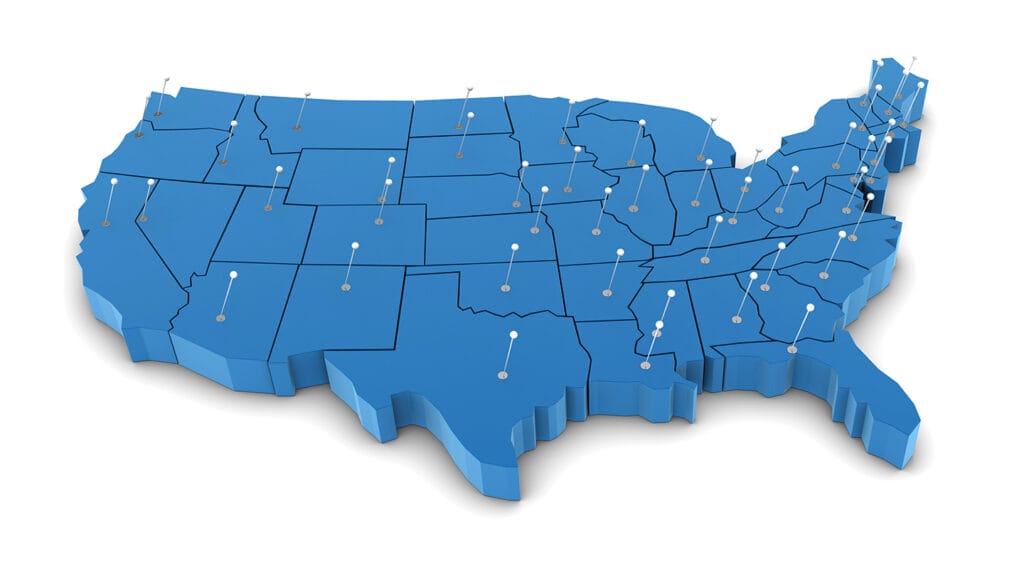
Officials with the Department of Health and Human Services (HHS) said Tuesday they have urged states to adopt flexibilities to minimize Medicaid coverage loss during the unwinding of the continuous enrollment provision.
Between 8 million and 24 million people could lose Medicaid coverage during the 12-month unwinding period, according to data from KFF. The concern, CMS and home care providers say, is not that these beneficiaries are no longer eligible, but rather that procedural roadblocks are stopping them from receiving coverage.
“The biggest challenge and concern we have is not that home care clients will be determined ineligible — though it will happen on a minimal basis — it is that the individuals will be disenrolled for procedural reasons,” National Association of Home Care & Hospice Director of Medicaid HCBS Damon Terzaghi told McKnight’s Home Care Daily Pulse in an email.
These procedural reasons include everything from beneficiaries changing addresses to losing forms in the mail to simply lacking information on the renewal process. As a result, HHS urged states to extend enrollment time frames and partner with local governments and community organizations to make information more accessible to Medicaid and CHIP eligibles.
HHS also urged states to adopt strategies and federal waivers it has proposed over the past year-and-a-half that make the renewal process easier, including in some cases, having the process be automatic.
On Monday, HHS offered new flexibilities including allowing managed care plans to assist people with Medicaid in completing their renewal forms and allowing states to delay administrative termination by a month to give people more time to fill out and return these forms.
Center for Medicaid & CHIP Services Director Dan Tsai said the agency has approved over 250 such waivers across the country but noted that states can be doing more. Two states — Florida and Montana — have not adopted any strategies.
Tsai also said that CMS will be making sure states are fulfilling their legal obligations to Medicaid enrollees.
“We are monitoring aggressively and making sure that states are following all federal requirements of what Medicaid enrollees are entitled to,” he said during the call. “If we find any violations of federal rules, we will use every letter that Congress has given to us swiftly and strongly to ensure eligible people receive coverage.”
Impact on home care
Terzaghi explained that it is hard to quantify the impact of the Medicaid unwinding on home care patients because CMS data does not separate out the disenrollments of individuals who are on Medicaid based on disability or old age status. However, some states have released data that reveal the effect of the unwinding on long-term care and disabled populations. Terzaghi offered the following examples:
- In Arizona, 9,180 individuals enrolled in a long-term care plan were in the “override group” as of February. (The override group is those individuals who were determined to no longer be eligible for Medicaid but were kept on due to continuous coverage.) As of April, that number dropped to 3,826, indicating about 5,000 people had lost coverage.
- In Kansas, over 10% of the disenrollments are “non-Modified Adjusted Gross Income (MAGI)” (i.e., Aged/Blind/Disabled [ABD] groups).
- In Maryland, there was an overall decline in non-MAGI enrollment from April to May despite an increase in total Medicaid beneficiaries.
- In Minnesota, about 7.9% of the disenrollments thus far have been ABD groups.
“We cannot say for sure that all of the disenrolled individuals were receiving home care,” Terzaghi said. “However, isolating ABD groups and, where possible, long-term care enrollees, is the best proxy that I can think of for understanding the impact.”
ABD groups at risk
Terzaghi expects a lot of the procedural disenrollments in the future to be from the category of ABD groups who are pending review. ABD groups tend to maintain eligibility for longer periods of time due to more static income (i.e., Social Security) and greater reliance on expanded Medicaid services available beyond Medicare and private health insurance. ABD individuals also tend to have more complex application requirements, including asset tests and meeting disability/long-term care criteria, he said.


